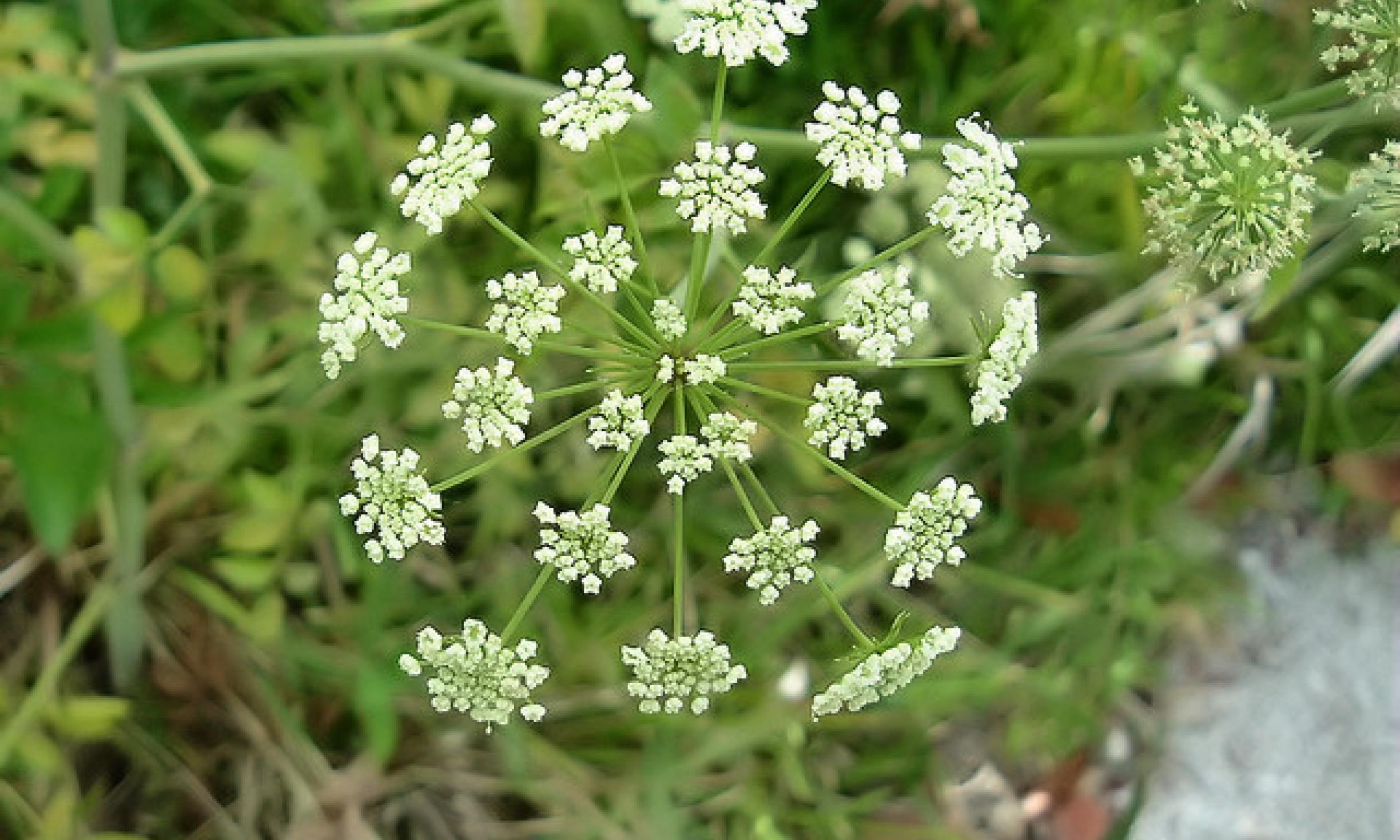Water Hemlock and its close relations are the most poisonous deadly plants in North America. All parts are deadly poisonous. Even a small mouthful of Water Hemlock can kill an adult. Therefore it stands to reason that ingesting even a little bit of Water Hemlock juice will make a person seriously ill.
It’s best to learn to identify this plant by sight, rather than characteristics that require you to handle it or examine the roots or inside of the stem. It is so virulently poisonous that it is best to avoid handling it at all.
Most poisonings have occurred due to confusion between these poisonous plants and edible look-alikes, especially other members of the Parsley Family.
Please do not rely solely on this web page for identifying these highly poisonous plants. Consult field guides for more detailed information.
Do not handle these poisonous plants. If you do, thoroughly clean your hands immediately afterward. Take appropriate steps to avoid accidentally ingesting any part of these deadly plants or their juice.
It is particularly important for wilderness survival enthusiasts to learn this plant, as its stems are hollow and are therefore appear to be ideally suited for use as straws. Don’t make use of this deadly plant in this way—many poisonings have occurred in this manner.
Water Hemlock (Cicuta maculata)
Other common names: Spotted Cowbane
Family: Parsley Family (Apiaceae)
Distinctive Features: Wet areas. Alternate twice-compound leaves; leaflets sometimes haphazard in arrangement.
Similar Species:
- Water Parsnip—very similar, except the leaves are only once-compound
- Cowbane—Also poisonous, and closely resembles Water Parsnip.
- Mock Bishop’s Weed
- Bulb-bearing Water Hemlock
- Wild Carrot (Queen Anne’s Lace)—but this plant grows in dry areas
- Other members of the Parsley Family.
Height: 3-6 feet tall
Flowers: Small white flowers in a flat or rounded umbel (an umbrella-shaped cluster) 2-5″ wide. Individual flowers about 1/8″ wide, have 5 petals and 5 stamens.
Leaves: Alternate compound leaves with lance-shaped leaflets, pointed, with numerous teeth. Note the sometimes multiples of leaves giving rise to a somewhat haphazard arrangement of leaves along the leaf stem. Sometimes doubly compound or lobed. Sometimes tinged with red. Up to about 4″ long, 1.5″ wide. The veins on the leaflets end at the notches between the teeth (this is unusual in plants).
Stem: Branching, smooth & stout, often mottled or solid purple. Hollow. Lower part of stem chambered. Roots have fat tuberlike branches.
Habitat: Wet open areas such as marshes, along shores, and sometimes open swamps.
Longevity: Perennial
